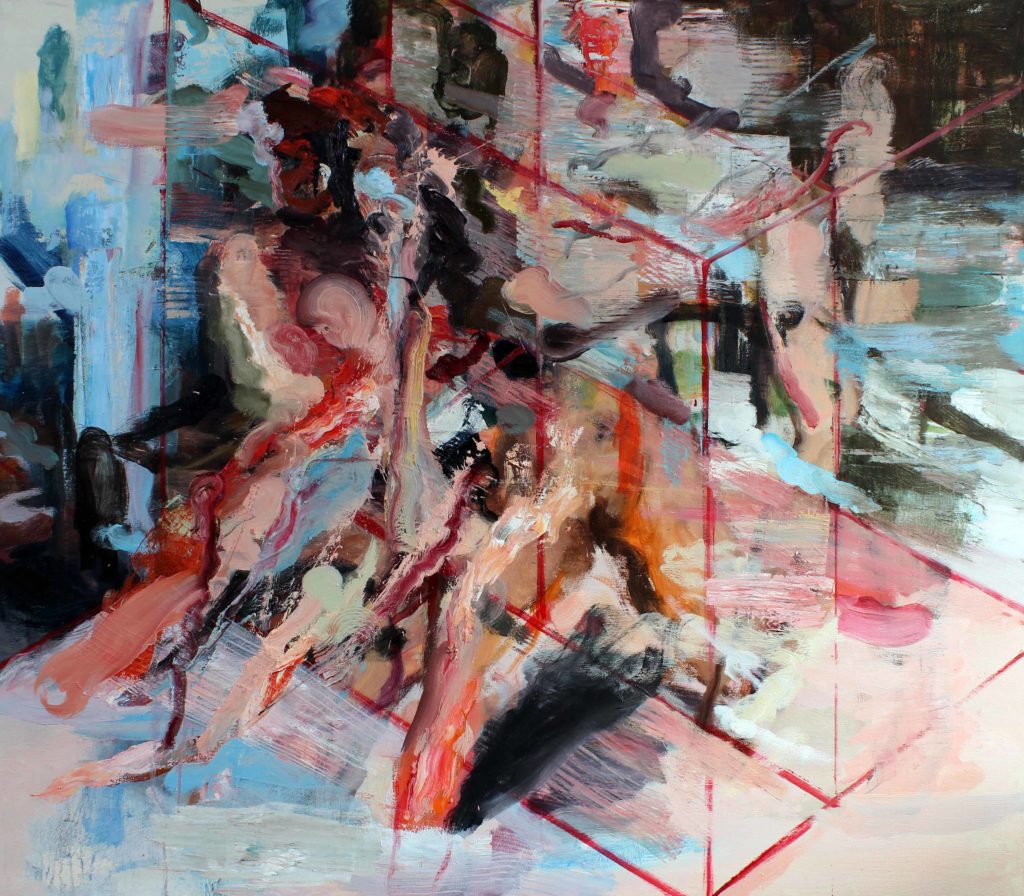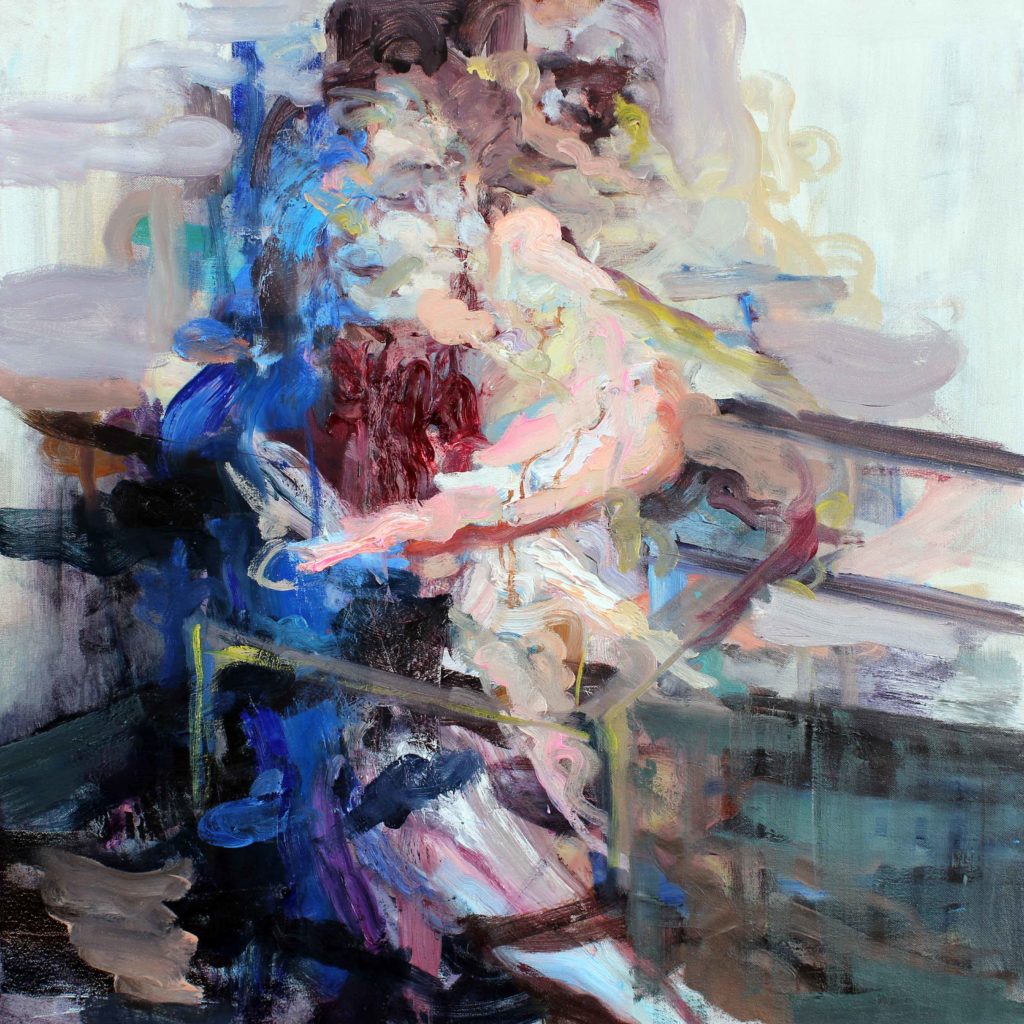In his paintings exploring the nature of our existence, Khayyam Zidane makes authentic use of the oil color and its rich vocabulary of tones. He is simultaneously present in two different geographies like Turkey and Syria, drawing inspirations from both. We embarked with Zidane on a deep journey into his art that combines philosophical questioning with technical mastery.
How did painting enter your life? Can you tell us about the process?
I began painting at a young age. Both throughout my early childhood and my elementary school years, I was a focus on attention as one of the children with a talent for drawing. At the age of fourteen I also started to develop my passion for drawing by attending courses, where I learnt the basics and did still life studies. Two years later, I had my first contact with oil colors; this is exactly when my passion for it began and continues up to this day.
Were do you draw your inspiration from in developing your art’s conceptual framework? How does your creation process unfold?
My artistic explorations began with research into the concept of light. The purpose of my first exhibition was to turn what was nihilistic and repetitive into what was unusual. Those early paintings did not represent the scene of the transformation; they were that very transformation. By the way, my artistic education, the numerous readings I did by myself, and preparing my master’s thesis helped me familiarize myself with a broad universe of ideas, theories and artistic currents.
One of the most important main qualitative threads that I reached during this process was the exploration of the future via artistic intuition. My interest in contemporary sciences, astrophysics and space shaped a series of questions expressing deep uncertainty on the purpose of our existence and our uniqueness in the universe as intelligent species.
Our journey actually goes well beyond our organic nature, for entropy is not an abstract term of physics. It is an interpretation affecting our awareness, an answer, and our inescapable destiny. Perhaps, it is also the most powerful source of conflict in our social system and it even extends into the conflict between an individual’s thoughts and emotions. As particles try to combine matter with symmetry, entropy constantly increases. This motion becomes all the more visible in the paintings with dissolving forms and masses.
In my paintings composed of forms and masses dressed in the tones of human flesh and skin, it is possible to talk about the states of matter referring to the concept of human being as a body. They also contain a kind of humanism that I can describe as the ability to perceive geometric concepts or linear structures in space.
Technically, my paintings contain some constant elements based on my experiences with the subject and my relationship to it, as well as color, technique, composition and the performative phase. Some of these appear before the start whereas others do so during the act of painting. I build the image ina series of phases; either based on construction or demolition, each phase has its own technical and conceptual characteristics. I generally follow this path rather unconsciously and I do not act with a specific purpose in mind. Once I gather my physical and mental strength, I start to work right away; I generate the first spark thanks to music.

In your works, you generally use oil painting. How does the medium affect your creation process?
Art is not supposed to reproduce cultural heritage; it is supposed to reflect on how the future will be, i.e. a contemporary conception of tomorrow. I have also realized that keeping up with the times does not necessitate distancing yourself from the canvas; to the contrary, it is feasible thanks to the content carried by that canvas. By the way, I also notice that nowadays there is a growing tendency towards the use of alternative techniques; they have their own paths too and they should not be compared against painting.
I regard oil paint as a vivid material full of life, and to be able to use it without losing its glamor, I have developed some special techniques involving base layers or color carriers. You have to be familiar with various issues to achieve it, e.g. to fully understand the layers of color, the colors’ drying behavior, the solvents’ characteristics and the colors’ chemical compositions. Each tone has several characteristics such as opacity, transparency and resistance to light. Therefore, I am also well informed about the color products and I use a variety of brands. With all their luminosity, oil colors allow me to obtain a vivid surface; this is in line with my style.
Can you name some figures from art history that are inspiring for you?
My relationship with both ancient and modern art history is multilayered and complex. Obviously, knowledge of art history adds some sort of depth to the artist’s work. What is more, the figures and movements with an impact on my artistic career are different from those with an impact on my art.
First, while doing research for my master’s thesis on ancient painting in Syria, I became aware of the masterpieces and their locations some of which date back to the 2nd millennium BC. The biographies of artists such as Leonardo da Vinci, Pierre Bonnard, Claude Monet and Francis Bacon were also very useful for me.
I have a passion for paintings where color values are used skillfully and which represent humanity in an expressionist and abstract manner. I see myself as part of this context and I share common characteristics with many artists. But my oeuvre differs from theirs in that each work is different from the rest, and although they share some common elements, each work always contains other elements that maintain its autonomy.

You did several exhibitions in both Turkey and Syria. How does working in different geographies affect your work?
Art does not have a nationality even though artists have; artistic identity is a wholly different matter. An artist categorically representing a country is rather an art historical phenomenon. Today’s art does not concern itself with reflecting reality; similarly, I am interested in concepts other than geography or boundaries. I focus on themes such as destiny and the expression of the existential anxiety originating from our physical existence.
Of course, I also feel the impact of Istanbul’s cultural and artistic environment. Here, I breathe air and drink water that is full of history, modernity, architecture, museums, art galleries and artists. In Syria the horizon is always very wide and it narrows us down, while in Istanbul you do not have horizon lines. Instead, you have life in all its dimensions, another kind of geography. This, in turn, is reflected in my paintings as a bolder style and futuristic tendencies.
Any artists, curators or institutions from today or from history that you wish you could collaborate with?
I am currently part of a group exhibition taking place at MERKUR Gallery and organized by Sabiha Kurtulmuş; I want to deepen my collaboration with them even further. In the past, I also participated to a group show at Plato Art Gallery curated by Marcus Graf. I am pleased that he expresses interest in my work as he is one of Turkey’s most important curators. I wish our collaboration continues well into the future.
While shaping the content of your work, how do you relate to your past?
I generally work in series extending over a year or longer. Each series have a unifying theme originating from the situations grabbing my attention rather than rational and intentional thinking. But if we look deeper, we are also able to notice the connections between the series and the cumulative experience they give rise to.
How did your paths cross with Art50.net?
Art50.net is one of Turkey’s leading online art platforms. It allows the art enthusiasts to acquire their favorite artists’ works easily and presents a variety of artistic styles. It offers me a valuable opportunity to introduce my oeuvre to Turkey’s art scene in particular.
You can find Khayyam Zidane’s works on Art50.net here.

